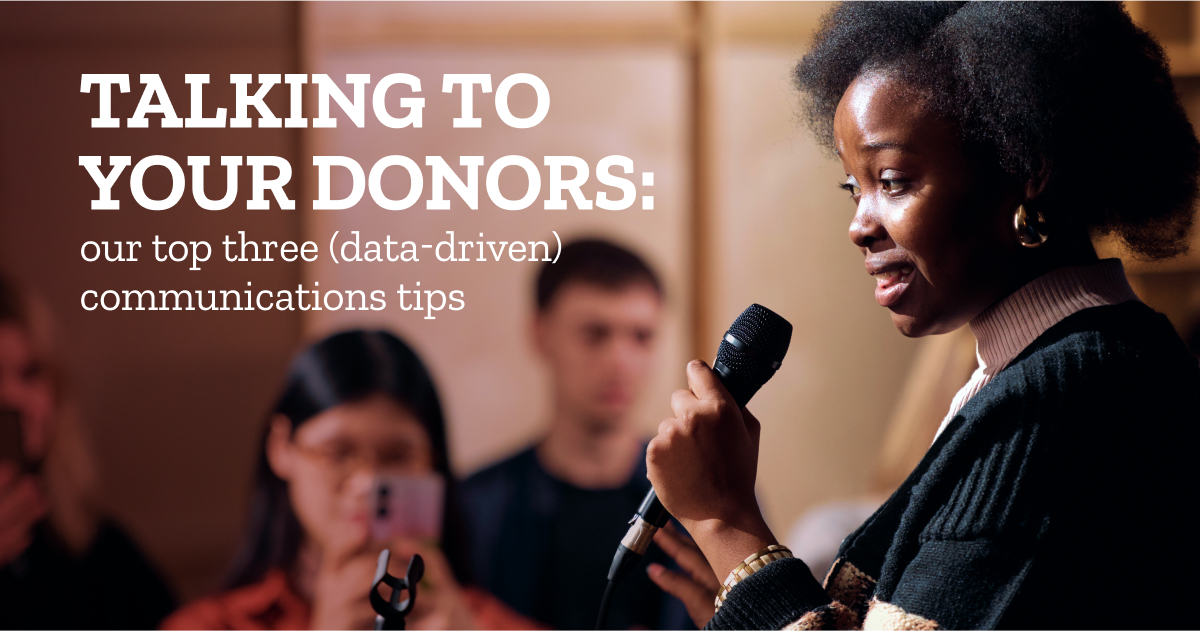If you’re a communicator, you often have a gut feeling about what works and doesn’t work when it comes to connecting with your donors and prospects. You may have a personal list of best practices that you rely on, and that you trust because they (usually) work. But do you know why they work?
One of Benefactor Group’s values is “We celebrate our geek factor.” We’re always curious and excited to learn. And we really, really love data. Making data-driven decisions is at the heart of all our work with clients—from feasibility studies and portfolio management to strategic planning and donor communications.
Data-driven donor communications? Yes, there are solid, research-backed reasons why some donor communication approaches work better than others. Today, we’re revisiting the data behind three of Benefactor Group’s best practices in donor communications. Most come from the world of behavioral economics—applying psychology to economic decision making.

Make the donor the agent of change.
Research into the mindset of wealthy people shows they think about themselves as having strong personal agency over their lives. They define themselves through the control and mastery they have over themselves and their actions. As a result, messages about community action don’t resonate as well with this audience as messages about donor agency. This was quantified in a 2018 study by Ashley V. Whillans and Elizabeth W. Dunn in which fundraising campaign messages focused on personal agency vs. community action increased donations by 82%.
What does that mean in practice? The “Together we can change the world” message isn’t right for this group. Try “With your gift, you will change the world” instead.

Use social norming.
Social norms are the largely unwritten rules that govern the behavior of a group—they define accepted and appropriate actions. Several studies have shown that social norms and charitable giving are linked. For example, Dorina Hysenbelli, Enrico Rubaltelli, and Rino Rumiati found that when people have information about how much others (especially those they consider peers) have given, they are more likely to give themselves.
Now, this might sound as though it contradicts #1 but the two can work together. This is the “Other people like you have already supported this cause” message: all the cool kids are doing it, and you should too.

Tell a story about just one person.
Storytelling is essential to fundraising. Data and statistics are important, but we know that the impulse to give comes from an emotional place, not a rational one. (See the late Daniel Kahneman’s Thinking Fast & Slow for a fascinating take on rational and irrational decision-making.) In fundraising, stories are not just examples. They are carefully chosen to illustrate the exact why of your cause or campaign.
And while it’s often easier to tell a story about a group of people, you will be much more effective if you can tell a detailed story about just one person. Inspired by Mother Teresa’s statement, “If I look at the mass I will never act. If I look at the one, I will,” Paul Slovic ran a study showing that people felt a greater compassion and willingness to donate when shown a photo of one child versus a photo of several children.
Tell a story that has the classic arc: a hero, a conflict, a choice, and a conquest. You can make a client or beneficiary the hero, center a donor as hero, or make a colleague the hero—the key is to show progress. Demonstrate the why of your cause.
Yes, we know how hard it is to collect stories. Coaching your frontline colleagues to ask for stories, securing the little details that make a story stand out, following up with your subject to get permission… it’s all worth it. Be disciplined, be persistent, and be organized. Keep a library of stories so you have a good supply of powerful moments of transformation to share with your donors and prospects.
Fundraising is often described as both an art and a science—and fundraising communications truly combine the two. We believe that solid data gives your art extra power.
We’d love to hear from you if you’ve integrated these approaches into your own writing! Drop us a note at [email protected].





